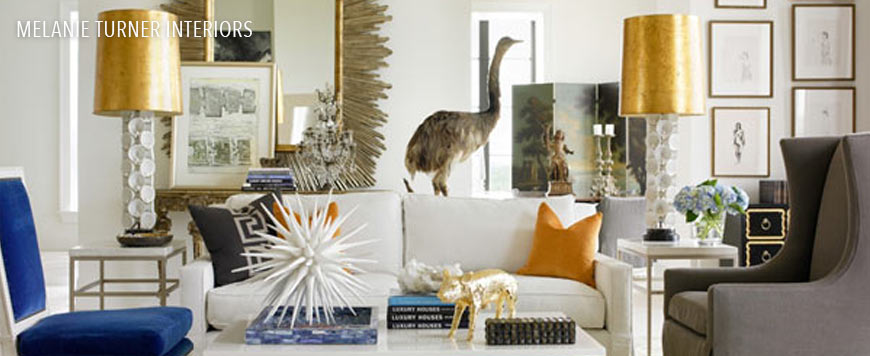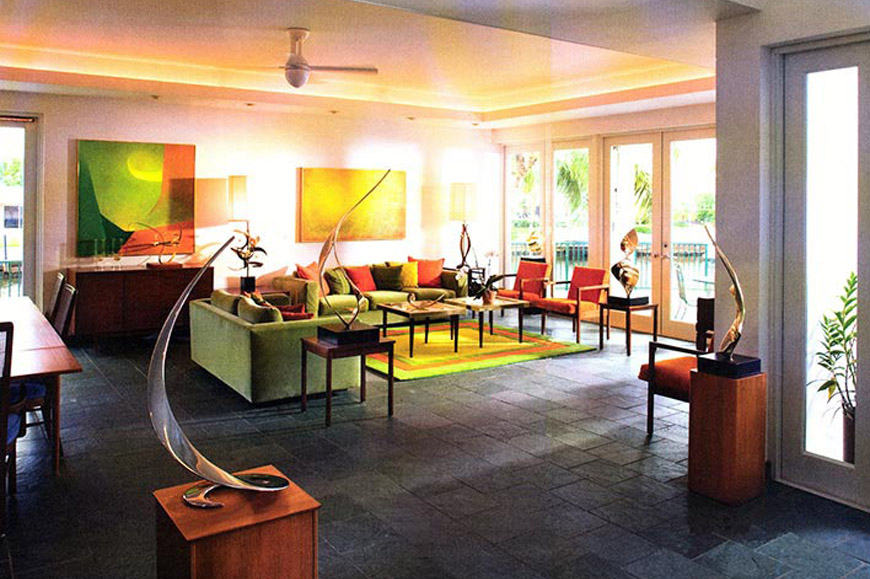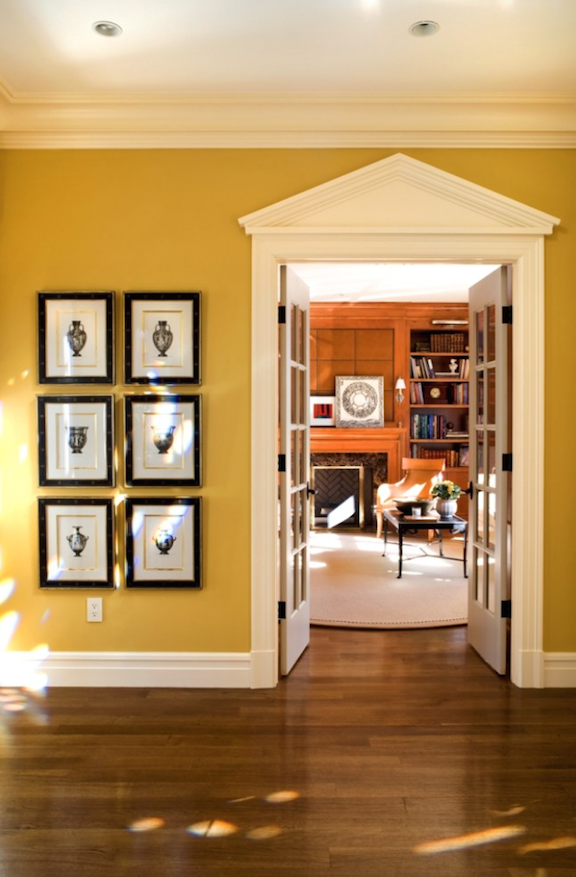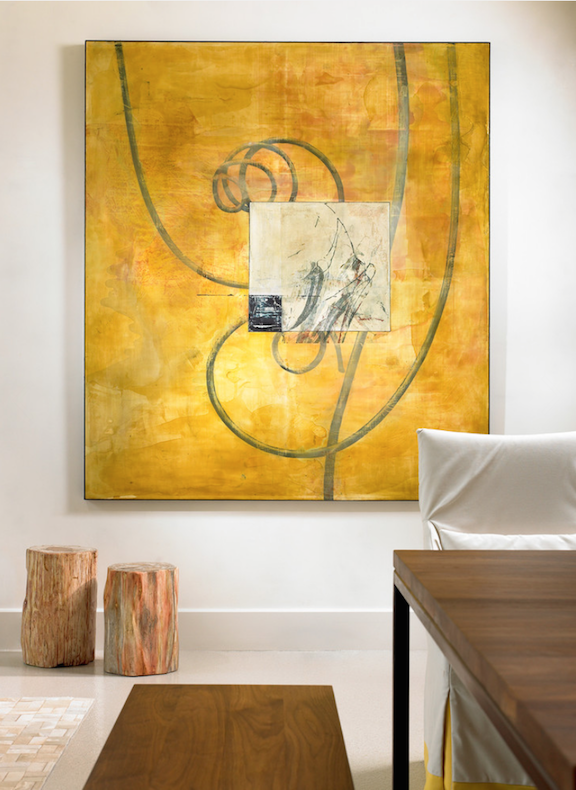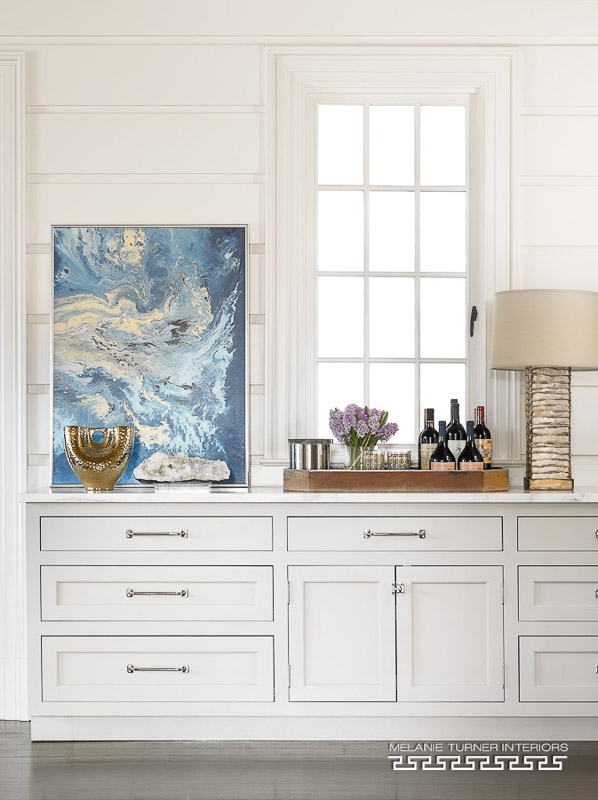The use of ‘art therapy’ as a profession began in English-speaking and European countries in the mid-20th century and published accounts of that work describe the influence of the aesthetics in psychiatry, psychoanalysis, rehabilitation, early childhood education, and art education. Art Therapists use art media, the creative process, and the resulting artwork to explore their feelings, reconcile emotional conflicts, foster self-awareness, manage behavior and addictions, develop social skills, improve reality orientation, reduce anxiety, and increase self-esteem.
But we don’t have to be an Art Therapist to know that being surrounded by art and color are conducive to better living overall.
Art for art’s sake vs. I need something to go with my sofa.
We know that the definition of art is subjective, making it very personal. Some people will hold back on furnishings to showcase their pieces and others will fill the room with different kinds of art, from paintings and photography to pottery, sculpture, fabrics and costumes.
I would like to focus on the placement and hanging and placement of your artwork.
What else is going into that space? Are you hanging a series of pieces? How will the light fixtures and door frames effect the pieces?
Mechanics
First, you will want to use picture-hanging hooks as they go into the wall at an angle, giving them more stability. There are three types; 1. A one-nail hook holds up to 30 pounds. 2. A two-nail picture hook holds about 50 pounds and 3. A three-nail hook supports up to 100 pounds.
Use two picture hooks per piece as they offer more durability and keep the pictures level.
Some installers recommend installing two D-rings rather than a wire to the back of frames and I advise using a level and ruler to ensure that both the picture hooks and the D-rings are aligned.
450 Architects
x
Guides
When hanging a single piece, the standard rule of thumb suggests placing the center of the art at 58 to 60 inches off the ground, at eye level. If you are hanging more than one piece, put the center point of the arrangement using the 58 to 60-inch rule.
If there is artwork on other walls in the room, you might want to match the existing hanging height.
Grids are one way to adhere to a traditional feel in the placement of your art and the best way to follow a straight or diagonal line. They are also a great way to direct the eye with art to direct the flow of a house. The pieces themselves can determine whether you use symmetry in your layout, as in the wall below. The size of the pictures will determine the spacing between.
For larger pieces, put 2 to 3 inches between, including the spacing above, below and on either side of the frames.
For smaller pictures, an inch and a half is a good rule to go by. Same spacing around applies.
Sroka Design
x
You can create symmetry with an asymmetrical display, as in the great display of the dogs below:
Melanie Turner Interiors
x
Break the mold
When arranging multiple pieces and sizes, you could toss the grid and do what is called a “salon installation.” This is where you are free to arrange groups, from wall to wall and floor to ceiling. You will want to start with the largest piece of art, placing it in the center or just off from the middle, and work your way out. If the pieces are mostly the same size, you might want to weight the center with darker pieces and frames. Place the pieces on the floor first in order to configure your layout.
When in doubt, you could create a template the size of the artwork using artist’s masking tape to give you a real sense of the spacing and weight of your gallery.
Try not to align the top of a painting with the top of a door frame. Either a few inches above or below will look better. And don’t forget to consider a low hanging chandelier or the placement of a lamp.
Centerpiece
Sometimes a single piece of art will be the statement for a room. Large or small, the scale is a crucial part of the your choice. Be careful not to pick pieces that are either too small for a space or too large. The abstract painting below is a great example of large scale art mixed with plenty of breathing room and a great mix of modern and natural decor.
Beckwith Interiors
x
You may want to completely bypass the hanging and use color as the focal point.
Melanie Turner Interiors
x
In every case, your artwork plays a starring role in interior design and its influence in our daily lives is priceless.
Remember to have fun when hanging your artwork.

